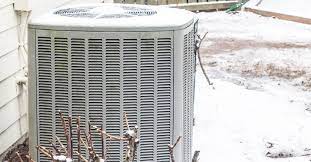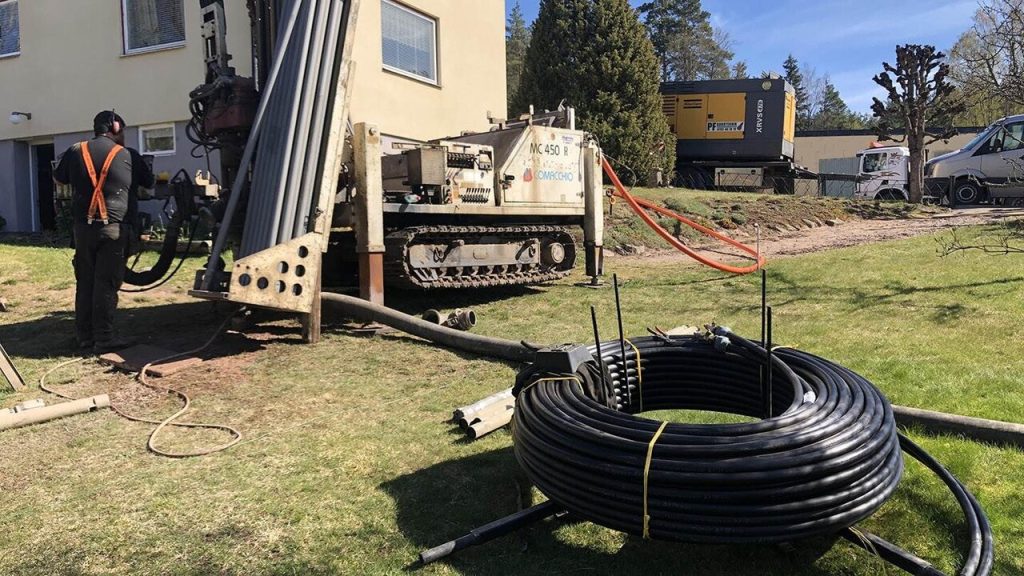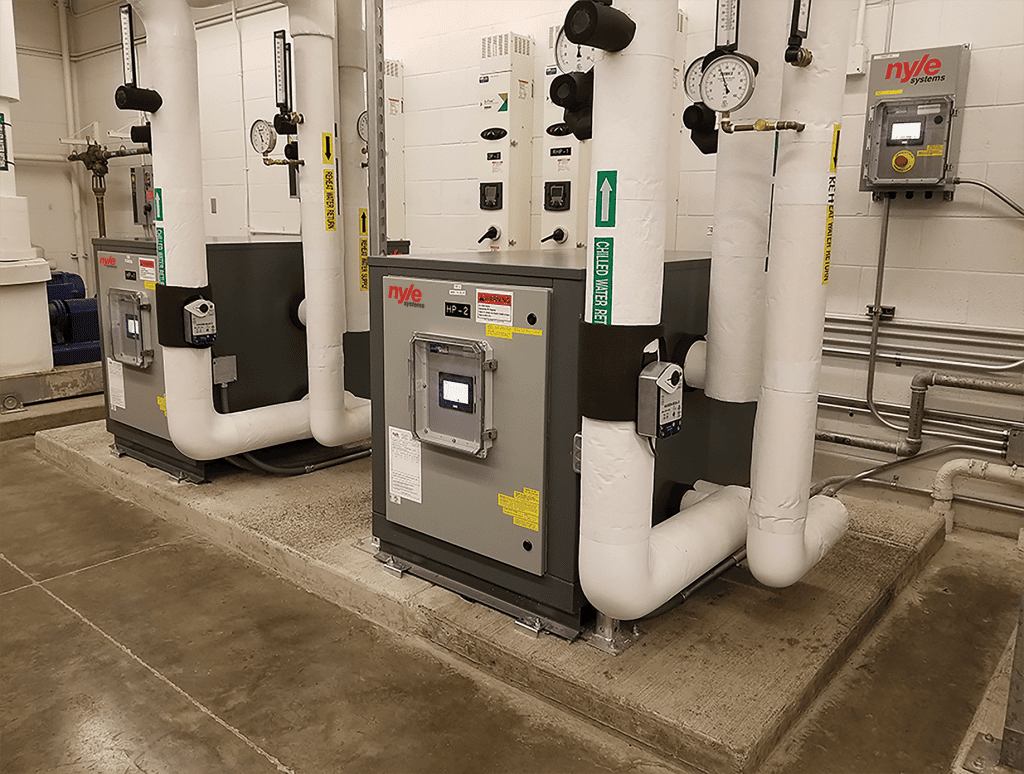Heat pumps are excellent for keeping a comfortable indoor temperature. They are bought not only for their heat-transferring capabilities, but also for their price. However, you might be perplexed as to why your heat pump is less effective in colder climates.
It is not unusual if your heat pump does not provide much heat in really cold conditions because temperature impacts heat pump efficiency. Heat pumps operate more efficiently at higher temperatures and less efficiently at lower temperatures. When the temperature goes to 30°F below, the appliance starts to lose some of its efficiency. This device operates best at 40°F above.
Temperature and heat pumps have a special interaction because the latter affects the product’s effectiveness. You should therefore comprehend the dynamics of their interaction. You need to understand how heat pumps work in order to achieve that.
How Heat Pump Performance Relates To Temperature

Depending on which mode you need it in, a heat pump can cool or warm a house. Heat pumps are devices that move thermal energy from a source (the source) to a sink (the sink). Because of this, the temperature of its source has a significant impact on its effectiveness.
A heat pump transfers the heat within your home or room to the outside while it is in cooling mode. In turn, this lessens the heat from the source, causing your home to chill while it is in this mode.
On the other hand, this straightforward operation reverses in its heating mode. The heat is then brought inside by the heat pump after being captured outside.
The heat pump may be used in both summer and winter thanks to this method. Additionally, because they don’t use fuel to alter the temperature of a particular location, they are environmentally benign. But it also means that they are subject to the temperature of their source.
Heat pumps’ efficiency declines because it is more difficult for them to extract heat from a cold environment, even when they can still do so. Although they can function at temperatures as low as 30°F to as high as 25°F, they perform best when the temperature is over 40°F.
Additionally, because it is far more difficult to absorb heat energy from their source, they take more energy to transport heat at lower temperatures.
Heat pumps can be divided into various categories based on the heat energy they use. Here are the three basic types of heat pumps in order to comprehend how temperature impacts its effectiveness depending on which heat source it depends on:
Heat Pump: Air To Air
Heat pumps with an air supply obtain thermal energy from the air at their source. It captures heat energy from your home’s atmosphere when in cooling mode. When in heating mode, it draws heat from outdoor air to heat your house. If the air temperature is low, it also loses efficiency.
If the temperature difference between inside and out is quite small, they work significantly better. They can still absorb as much heat as they can, but it does so less effectively than when the air is moderate to high in temperature.
Heat Pump: Geothermal

Ground source heat pumps, also known as geothermal heat pumps, have the ability to both emit and absorb heat from the earth. Even in the winter, the ground’s thermal energy is more reliable than the air’s temperature. The efficiency of a geothermal heat pump does not fluctuate as much as an air source heat pump because ground temperatures are typically 55°F or less and remain constant throughout the year.
Heat Pump With Water Source

Heat pumps that draw their thermal energy from water still function similarly to air or ground source heat pumps. You should place these heat pumps close to a large body of water, like a lake or river.
They circulate the water in their pipes to extract heat from it, and then they discharge the resulting energy into your home. In the summer, this process turns around. Water source heat pumps are less effective at heating since they depend on a body of water whose temperature may drop over the winter. They are therefore more effective at cooling than at heating.
Best Heat Sources Other Than Heat Pumps
You may require a backup heat source because heat pumps consume less electricity but are less efficient in colder temperatures. If you live in a region that gets particularly chilly during the winter, you might need a backup heat source. We have searched the internet for this purpose. Here are a few of your options for heating:
Furnace
They produce heat by burning natural gas or propane, which is then dispersed throughout their ductwork. They create heat instead of absorbing it, therefore the temperature has no impact on their efficiency.
Boiler
They warm the water in their tank, then pump the heated water via their pipes to distribute it. Oil, gas, or electricity can all be used by a boiler to generate heat. The water or steam inside the boiler’s tank is heated using this energy to warm our house. When the water cools, it returns to the boiler’s tank where it is reheated, and the cycle is then repeated.
Pellet Fireplaces
Large pellet burners can heat an entire house, whilst small pellet stoves can only heat a limited space. To do this, they burn wood pellets or other types of organic pellets. They function similarly to fireplaces but raise the temperature of a room using a thermostat.
They don’t simply produce little amounts of ash that need to be cleaned up after usage, but they are also 70% to 83% efficient.
Can A Heat Pump Switch To Emergency Heat?
Emergency heat is a backup heating system that warms your home by heating the heat pump’s coils with electricity. You can manually turn them on, but it is best to avoid doing so because this system uses a lot of electricity.
When the outside temperature is too low for heat pumps to circulate heat into your home, they automatically convert to emergency heat.
This setting typically activates when the outside temperature drops below 30 degrees Fahrenheit, although it might also do so if the heat pump is unable to provide the desired level of heating.
In The Winter, Can A Heat Pump Freeze Up?
Winter months frequently see heat pumps freeze. Because of this, there is a defrost function available in case this occurs. The refrigerant that the heat pump uses to transport thermal energy condenses as it generates heat, which could lead to some frost accumulation on its exterior coils.
This is unimportant since heat pumps automatically activate their defrost function when required. Get your heat pump checked by a technician if the ice buildup threatens to damage it because the defrost mechanism is not functioning properly.
What Temperature Is Best For A Heat Pump?
In the winter or during the chilly months, it is preferable to set your thermostat to 68°F. The house will be sufficiently warm at this temperature, and your heat pump won’t burn up too much electricity. On the other hand, it is up to you how cool you want your house to be in the heat. To avoid wearing out the equipment, you should avoid setting the temperature too high or too low.
Conclusion
The efficiency of your heat pump is influenced by the heat source’s temperature. Although it has been demonstrated to continue function at low temperatures, this does not entail that its effectiveness declines. Understanding how heat pumps transfer energy from one location to another enables you to comprehend why this occurs. You could purchase a backup heat source if you are concerned about their decreased efficiency. But since heat pumps do not have any cooling problems, this should be the least of your worries.






I am actually thankful to the holder of this site who has shared this
wonderful paragraph at at this place.